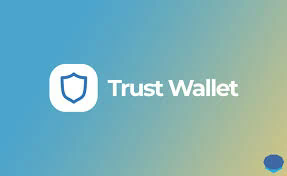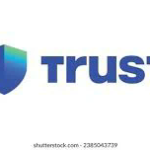An In-Depth Exploration of Ethereum Wallets: Types, Security, and Best Practices
## Introduction

Ethereum wallets are crucial components of the Ethereum blockchain ecosystem. They serve as interfaces to manage Ether (ETH), the native cryptocurrency of the Ethereum network, as well as tokens created on the Ethereum platform via smart contracts. This article aims to provide a comprehensive understanding of Ethereum wallets, dissecting their types, security considerations, and best practices for users. Whether you’re a novice looking to store some ETH or a seasoned investor dealing with various tokens, understanding Ethereum wallets is essential for managing your assets effectively.
## What is an Ethereum Wallet?
At its core, an Ethereum wallet is a software program or a physical device that allows users to store, send, and receive Ether and Ethereum-based tokens. Unlike a traditional wallet that holds physical currency, an Ethereum wallet does not store currency in a physical sense. Instead, it holds the cryptographic keys required to interact with the Ethereum blockchain.
### Public and Private Keys
Every Ethereum wallet consists of a pair of keys:
– **Public Key**: This key is derived from the private key and is similar to an email address. It can be shared with others to receive funds.
– **Private Key**: This key is akin to a password. It’s used to sign transactions and should be kept private and secure. If someone gains access to your private key, they have full control over your wallet’s contents.
### How Ethereum Wallets Work
When you conduct a transaction using your Ethereum wallet, it involves signing that transaction with your private key, which is then verified by the Ethereum network. This process ensures that only the wallet owner can initiate transactions.
## Types of Ethereum Wallets
There are several different types of Ethereum wallets, each with its own strengths and weaknesses. Understanding these types is critical for choosing the right wallet for your needs.
### 1. Software Wallets
Software wallets are applications that allow users to interact with the Ethereum blockchain. They can be further categorized into:
#### a. Desktop Wallets
– **Description**: Installed on a PC or laptop, desktop wallets provide a high level of security as they are stored on a single device.
– **Examples**: Exodus, Mist, and Atomic Wallet.
– **Pros**: Greater security than online wallets; you control your private keys.
– **Cons**: Vulnerable to malware and hacking if the computer is compromised.
#### b. Mobile Wallets
– **Description**: These wallets are applications designed for smartphones.
– **Examples**: Trust Wallet, MetaMask (mobile version).
– **Pros**: Convenient for transactions on-the-go; often include features for decentralized applications (dApps).
– **Cons**: Higher risk of theft due to loss or theft of the phone.
### 2. Hardware Wallets
Hardware wallets are physical devices designed to store cryptocurrencies securely offline.
– **Examples**: Ledger Nano S, Trezor.
– **Pros**: Highly secure against hacking, as they are immune to computer viruses; ideal for long-term storage (cold storage).
– **Cons**: Higher cost; less convenient for frequent transactions.
### 3. Web Wallets
Web wallets are accessed via a web browser and usually hosted by third-party companies.
– **Examples**: MyEtherWallet, MetaMask (browser extension).
– **Pros**: Easy to use; can access from any device with internet.
– **Cons**: Trust issues with third-party services; private keys can be stored on their servers.
### 4. Paper Wallets
A paper wallet is a physical printout of your public and private keys.
– **Pros**: Immune to hacking; offline storage.
– **Cons**: Easy to lose or damage; not user-friendly for transactions.
## Security Considerations
As with any financial technology, security is a critical factor in choosing and using an Ethereum wallet. Here are several important security measures and considerations.
### 1. Private Key Management
– **Backup Your Keys**: Always back up your private keys and store them in a safe location. Many wallets offer recovery seed phrases, which can restore your wallet if lost.
– **Never Share Your Private Key**: Your private key should remain confidential. Sharing it can lead to loss of funds.
### 2. Two-Factor Authentication (2FA)
Wherever possible, enable 2FA on wallets that support it. This adds an extra layer of security, requiring more than just a password to access your wallet.
### 3. Beware of Phishing
Phishing attacks are common in the cryptocurrency space. Always ensure that you are using legitimate websites and applications. Double-check URLs and avoid clicking links in unsolicited emails.
### 4. Software Updates
Keep your wallet software updated to protect against vulnerabilities. Developers frequently release updates to patch security holes and enhance functionality.
### 5. Use Cold Storage
For long-term storage of large amounts of ETH or tokens, consider using a hardware wallet or a paper wallet. Cold storage minimizes exposure to online threats.
### 6. Monitor Transactions
Regularly monitor transactions from your wallet to detect unauthorized access. Most wallets provide transaction histories that help users stay informed about their funds.
## Best Practices for Using Ethereum Wallets
Using an Ethereum wallet effectively involves understanding not only how to store your assets but also how to interact with the Ethereum ecosystem. Here are some best practices.
### 1. Choose the Right Wallet
Your choice of wallet depends on your goals:
– For frequent transactions, a mobile or web wallet might be best.
– For holding assets long term, consider a hardware wallet.
– For simple one-off transactions, a web wallet is often sufficient.
### 2. Secure Your Wallet
Adopt robust security habits:
– Utilize strong passwords.
– Use 2FA wherever possible.
– Regularly update your software.
### 3. Educate Yourself About Tokens
If you plan to hold Ethereum-based tokens (ERC20, ERC721), familiarize yourself with their specifics, including how they are stored and retrieved.
### 4. Diversification of Wallets
Consider using multiple wallets for different purposes (e.g., one for daily spending, another for long-term storage). This diversification can minimize risks.
### 5. Stay Informed About the Network
The Ethereum network is constantly evolving:
– Follow updates about Ethereum upgrades (e.g., Ethereum 2.0).
– Stay knowledgeable about the latest security threats in the cryptocurrency space.
## Conclusion
In summary, Ethereum wallets are indispensable tools for anyone looking to engage with the Ethereum network. Understanding the different types of wallets, their security implications, and the best practices for their use is vital. As the cryptocurrency landscape continues to expand and evolve, being informed and proactive about wallet management can significantly enhance the safety and efficiency of your cryptocurrency activities.
By taking the right steps, from choosing the appropriate wallet to securing your private keys, you can safeguard your assets while enjoying the full benefits of the Ethereum platform. As we advance into a future increasingly driven by decentralized technologies, mastering the intricacies of Ethereum wallets will surely be an asset in navigating this complex, yet exciting landscape.


